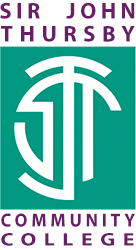Topic 5 Year 7 Geography
| Geography | |||
| Topic | Population and migration | ||
| No of lessons | 9 | ||
| When is it happening | Term 3/ Half term | ||
| What will students learn | Students will be able to explain population change by using birth and death rates; some will be able to link these to the demographic transition model. Population distribution and links to physical and human geography of the UK will be investigated. Understanding the reasons for and consequences of both economic migration and refugee migration. | ||
| Key Knowledge that students should know at the end of 'Topic' | This is the knowledge that students will meet for the first time in this topic |
Explaining the links between birth and death rates and population growth and recognising the change over time shown on the demographic transition model. Describing population distribution, with a focus on the UK, linked to both the physical and human geography of the UK. Explain how push and pull factors lead to migration of both economic migrants and refugees with a focus on the consequence of international migration in the UK. |
|
| This is knowledge that students may have met before but will need to deepen their understanding | Students already have knowledge of the physical and human characteristics of the UK. Students understand the term migration particularly urban to rural migration/urbanisation. |
||
| Key Skills that students should be able to demonstrate at the end of 'Topic' | This is the skills that students will meet for the first time in this topic | Students will develop the skill of reading line graphs by using a more complex graph - the demographic
transition model. Students will link topographical maps to choropleth maps. |
|
| This is skills that students may have met before but will need to develop |
Students will be able to use a variety of maps; including choropleth maps. Students will consolidate direction. |
||
| Key vocabulary that students should know and understand | Population, features, structure, distribution, choropleth, topographical, climate zones, megacities, culture, histogram, exponential, birth rate, death rate, demographic transition model, population structure, natural increase/decrease, migration (rural to urban, urban to rural, internal, international, regional), push factor, pull factor, fertile land, services, democracy, asylum seeker, refugee, host country, country of origin, multicultural. | ||
| The Big Question | How does population change and what are the causes of international migration? | ||
|
Key questions that students should be able to answer at the end of the 'Topic' |
How has world population changed? | ||
| Why has the world's population grown? | |||
| What does the demographic transition model show? | |||
| Why is global population distribution different? | |||
| How is the UK population distributed? | |||
| What is migration? | |||
| Why do some people migrate? | |||
| Should we help refugees? | |||
| Is the UK a multicultural country? | |||
